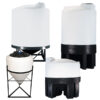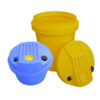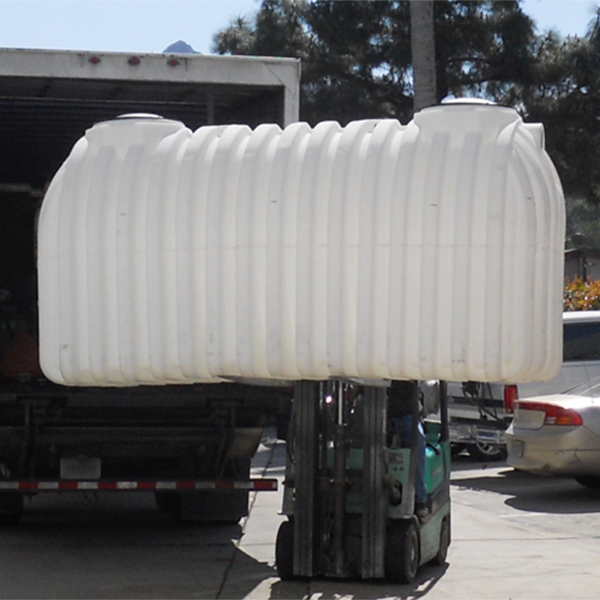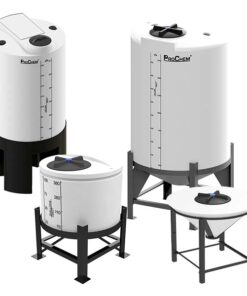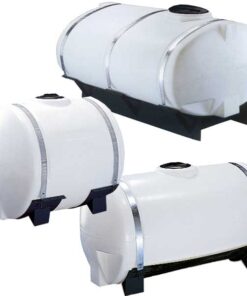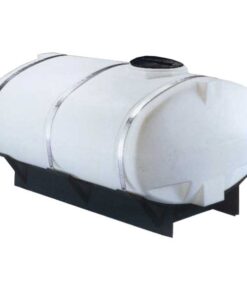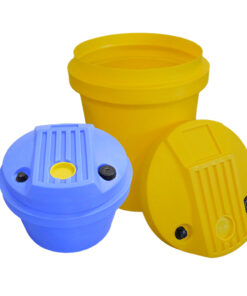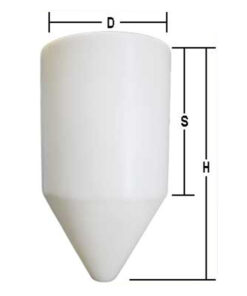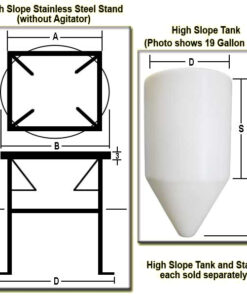Below Ground Cistern Tanks
Cistern Tanks are ideal for instances when drinking water must be hauled in or if a well just doesn’t meet consumption needs. Cisterns are produced with 100% virgin resin which meets FDA specifications for potable water. Where applicable, cisterns have been certified under ANSI/NSF Standard 61.
The 325 and 550 gallon spheres may remain in the ground when empty. These tanks include a molded-in elevated pump stand on the bottom of the tank. The ribbed tanks (600 gallon and larger) should be filled one-fourth full after installation.
Manhole extensions and lid/riser combinations are available for instances where it is necessary to bring access to ground level. A full range of bulkhead fittings to help adapt the cistern to suit specific needs or applications are available. For further information call customer service.
Cistern tanks are manufactured by means of the rotational molding process, which produces a one-piece, seamless, watertight tank. Polyethylene is unaffected by soil chemicals so the tanks will not rust or corrode and require no additional coatings as other tanks do.
To create your setup, look at the various sizes we have below. You can then contact a Distributor or Rep in your area to complete the process of ordering. If image is available, hover over for larger view.
| Image | PN | Name | Diameter | Height | Weight | |
|---|---|---|---|---|---|---|
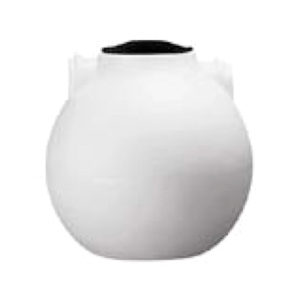 | 01-2987 | 325 Gallon Cistern Tank | 54" | 51" | 124 lbs | |
 | 01-2988 | 550 Gallon Cistern Tank | 64" | 64" | 179 lbs | |
| Image | PN | Name | Length | Width | Height | Weight |
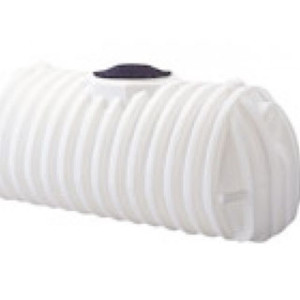 | 01-2989 | 600 Gallon Cistern Tank | 101" | 51" | 42" | 184 lbs |
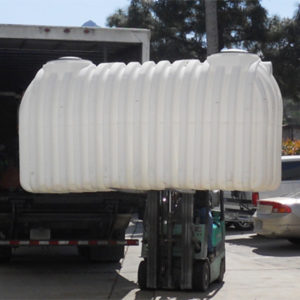 | 01-2990 | 1200 Gallon Cistern Tank | 102" | 60" | 58" | 372 lbs |
 | 01-2991 | 1400 Gallon Cistern Tank | 116" | 55" | 66" | 432 lbs |
 | 01-2992 | 1700 Gallon Cistern Tank | 135" | 55" | 70" | 552 lbs |
A septic tank is designed for human waste, both black water and gray water. Normally, a bio-additive is introduced into the tank that consumes the waste and the by-product is inert. French drains (pipes with holes in them) are attached to the tank and the clean inert fluid is discharged over a large surface area and absorbed by the soil. The nutrients in the discharge are actually beneficial to the plant life in the area.
A cistern tank is designed for below ground storage of potable (drinking) water. The resins used in a cistern tank are FDA approved for contact with products intended for human consumption, septic tanks are not. Cistern tanks are heavier duty than septic tanks as well, meaning they can be routinely filled and emptied without worrying about sidewall integrity. Septic tanks are designed to be full at all times. Cistern tanks can be used as septic tanks, but septic tanks should NOT be used as cistern tanks.
Yes, it is safe to store water in Peabody’s above ground water tanks and below ground cistern tanks shown on our website. The resin used to manufacture these tanks meets FDA specifications for safe storage of potable water.
NSF International, founded in 1944 as the National Sanitation Foundation, is known for the development of standards, product testing and certification services in the areas of public health, safety and protection of the environment. Norwesco was the first polyethylene tank producer to receive the NSF certification, where applicable, for our potable water tanks.
The NSF certification process is done on a plant by plant basis. We currently have select tanks that are considered NSF approved that ship from our Shawnee, OK; Tooele, UT; Washougal, WA, Hanford, CA and our Corona manufacturing plant. For further details, please contact Customer Service. The resin that we use to manufacture our above ground tanks is considered an NSF approved resin.
We recommend you bury your tank not more than 24″ deep. We have manhole extensions available in 15″ and 24″ lengths to allow for access to your tank buried below grade without having to dig a hole in the ground to get to it.
No. Our below-ground tanks are only designed for direct burial applications. We do have a wide range of above ground tanks available for above-ground applications, including holding tanks designed to slide under mobile office trailers.
Yes. This is important for two reasons; It helps in the ease of leveling the tank and even inter-rib support during installation and insures that no sharp rocks or other objects puncture the tank during installation.
With our standard duty septic tanks (yellow), the answer is yes. This helps stabilize the tank and keeps it from shifting during backfill and equalizes the pressure inside and outside the tank so it does not become deformed during installation. Filling a Bruiser or cistern with water while backfilling is recommended but not required.
We do not recommend installing a below ground tank in areas with a water table that is not at least 120″ below the surface. This will enable you to dig to the proper depth to install the tank in a dry hole and prevent the tank from floating up out of the ground over time.
Proper sizing of a septic or a cistern tank depends upon a number of factors. For septic tanks, average sewage flow is the most important consideration. Most states require a minimum septic capacity of 1000 gallons. For cistern tank sizing, you need to determine your home water use. A good website to research what size is best for you can be found at http://inspectapedia.com/septic/Septic_Systems.php. For cistern tank sizing, consider the home water use calculator at http://apps.auroragov.org/WaterConservationCalculator/Default.aspx.
All of our tanks have been approved from coast to coast and even in some international locations. Ideal for rural locations, vacation homes, campgrounds, resorts and construction sites. Our cistern tanks are FDA approved for the safe storage of Potable water and will not impart a taste or odor to your water storage. They are compliant with FDA regulation 21CFR 177.150(c) 3.1 and 3.2.
There is no set distance that applies to all tanks or regions. Prior to installing any septic tank, you should check with your local sanitarian for specific lengths for the inlet and outlet tees.
In most state and county regulations or codes there is a direct correlation between the number of bedrooms and the size of the septic tank required. Please check with your local sanitarian or health department prior to purchasing any septic tank.
The installation instructions can be found under the edge of the lid.
The sand/gravel mixture we refer to can generically be called a “pea gravel” mixture. It should be 100% smaller than 1-1/2″ and approximately 50% smaller than 1/4″.

